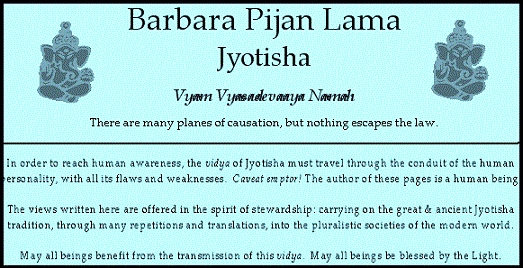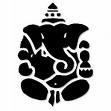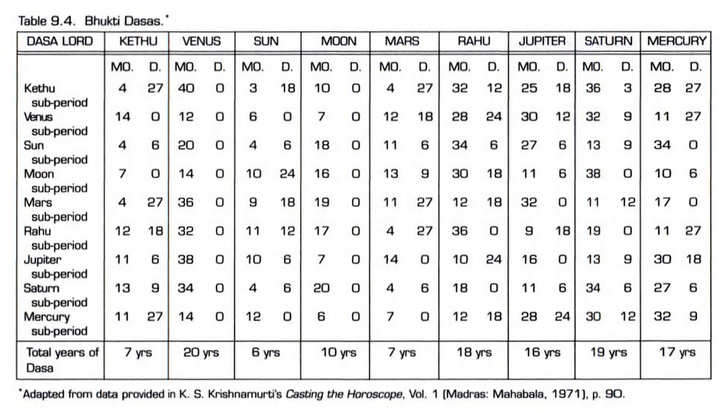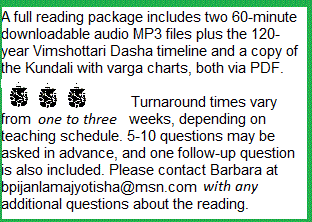

- BPHS Ketu Mahadasha = 7 years
- BPHS Shukra Mahadasha = 20 years
- BPHS Surya Mahadasha = 6 years
- BPHS Chandra Mahadasha = 10 years
- BPHS Mangala Mahadasha = 7 years
- BPHS Rahu Mahadasha = 18 years
- BPHS Guru Mahadasha = 16 years
- BPHS Shani Mahadasha = 19 years
- BPHS Budha Mahadasha = 17 years
BP Lama Jyotishavidya * modern commentary
- BP Lama Ketu Mahadasha
- BP Lama Shukra Mahadasha
- BP Lama Surya Mahadasha
- BP Lama Chandra Mahadasha
- BP Lama Mangala Mahadasha
- BP Lama Rahu Mahadasha
- BP Lama Guru Mahadasha
- BP Lama Shani Mahadasha
- BP Lama Budha Mahadasha
विम्शोत्तरि दशा
Dasa Vichaar
120 Year Life Timeline
Vimshottari = 120
The intimate psychology of a nativity is infinitely debatable. What is judged to be culturally inappropriate or self-destructive is rather subjective, in the eye of the beholder.
Vimshottari Dasha calendar = where the rubber meets the road in the samayavidya.
Factual events occurring in the lifetime should match correctly with the timelords and the bhava they control, or else there is something wrong with the birth datar.
-
Forgiveness and Closure during chidra-dasha = final bhukti
-
Growth-Challenging Angles between major timelord and sub-period ruler
-- Book of Ecclesiastes = Koheleth, 3:11
"He has made everything beautiful in its time.
He has also set eternity in the hearts of men;
Yet, they cannot fathom what God has done from beginning to end."
Donations of Animals
In addition to mantra, it is possible to follow Shri Parashara's instruction
for remedial action of giving a cow, buffalo, or goat in charity.
-
heifer.org provides life-giving animals and veterinary skills training to impoverished families throughout our world. It's easy and fun to select a charitable gift from their online catalog of buffaloes, cows, goats, and more.
-
oxfamAmerica also offers a lovely catalog of animal-donation selections
Chart showing the number of months-days in each bhukti,
from page 226, Vedic Astrology: Guide to the Fundamentals of Jyotish by Ronnie Gale Dreyer

BPL Commentary - value of Dasha systems
All of the legacy dasha systems which have survived the Kali Yuga = an inheritance from the previous descending Dvapara Yuga.
In any dasha system, the counting steps are logical but the intervals [lengths of the relative planetary periods] are usually not understood.
Returning to dvapara yuga after the long drugged slumber of Kali Yuga is like recovering from a coma.
Things are still fuzzy.
However, the fog is truly clearing now. The inherited shastra will soon make practical daily sense.
~~ Book of Ecclesiastes = Koheleth, 3:1-8
" There is a time for everything, and a season for every activity under heaven:
- a time to be born and a time to die,
- a time to plant and a time to uproot,
- a time to kill and a time to heal,
- a time to tear down and a time to build,
- a time to weep and a time to laugh,
- a time to mourn and a time to dance,
- a time to scatter stones and a time to gather them,
- a time to embrace and a time to refrain,
- a time to search and a time to give up,
- a time to keep and a time to throw away,
- a time to tear and a time to mend,
- a time to be silent and a time to speak,
- a time to love and a time to hate,
- a time for war and a time for peace."
Length of Maha-dasha -
Major- Period
BPHS: Description of Mahadasha and Its Nine Bhukti
(sub-sections)
Duration 7 yrs +
BPHS Ketu Mahadasha
BPL commentary on Ketu Mahadasha
Ketu: withdrawal, witness Observer, forgiveness , dispersal, beheading, severance, abandonment, pilgrimage, meditation , surrender
Duration 20 yrs +
BPHS Shukra Mahadasha
BPL commentary on Shukra Mahadasha
Shukra-Venus: Finance, laxmi-luxuries, partnership, Permission to Acquire capital assets , sensual pleasures, sweets, sukra-sugars, balance, beauty, equity, parity, fairness, alliance, agreement, negotiation, trust, vows, balance, mates, match
Duration 6 yrs +
BPHS Surya Mahadasha
BPL commentary on Surya Mahadasha
Surya-Sun: Creative Intelligence, radiation, aura, ego, brilliance, centrality, divinity, the Soul-Self
Duration 10 yrs +
BPHS Chandra Mahadasha
BPL commentary on Chandra Mahadasha
Chandra-Moon: Astral Field, the Whole Mind, emotion, compassion, sympathy, intuition, nourishment, caretaking, mother
Duration 7 yrs +
BPHS Mangala Mahadasha
BPL commentary on Mangala Mahadasha
Kuja-Mars: muscular Movement, blood, competition, direct action, invasion, anger, Kinetic Energy
Duration 18 yrs +
BPHS Rahu Mahadasha
BPL commentary on Rahu Mahadasha
Rahu: Seized by Desire : Ambition, instrumentalism, expedience, deception, desire, mesmerizing, fascination, camouflage, trickery, delusion, slippery, slithering, smoke
Duration 16 yrs +
BPHS Guru Mahadasha
BPL commentary on Guru mahadasha
Guru * Jupiter: Wisdom-Expansion , procreation, abundance, inclusiveness, generosity, charity, divinity, golden, glowing, abundant, fertile, children, understanding, philosophical teaching-preaching, forgiveness
Duration 19 yrs +
BPHS Shani Mahadasha
BPL commentary on Shani Mahadasha
Shani * Saturn : Structure, maturity, the burden of responsibility, accountability, institutions, bureaucracy, delay, discipline, austerity, preincarnationally planned Cleanup , age, time, chronic situations, rectification, regulation, restriction, cold, dry, bitter, pinching, anxiety, social law, scarcity, fear of lack, fear of condemnation, fear of punishment
Duration 17 yrs +
BPHS Budha Mahadasha
BPL commentary on Budha Mahadasha
Budha-Mercury Logical Argument, messaging, Gesture, communication, evangelism, management, accusations, Explanation, conversation, mental Tasking
- Vimshottari Dasha general social-material effects for Mesha indriya-lagna
- Vimshottari Dasha general social-material effects for Urisha indriya-lagna
- Vimshottari Dasha general social-material effects for Mithuna indriya-lagna
- Vimshottari Dasha general social-material effects for Karkata indriya-lagna
- Vimshottari Dasha general social-material effects for Simha indriya-lagna
- Vimshottari Dasha general social-material effects for Parthya indriya-lagna
- Vimshottari Dasha general social-material effects for Tulā indriya-lagna
- Vimshottari Dasha general social-material effects for Vṛścika indriya-lagna
- Vimshottari Dasha general social-material effects for Dhanus indriya-agna
- Vimshottari Dasha general social-material effects for Makara indriya-lagna
- Vimshottari Dasha general social-material effects for Kumbha indriya-lagna
- Vimshottari Dasha general social-material effects for Meena indriya-lagna
I am an engineering manager and have started reading vedic astrology by my interest.
I have read Laghu parashari few times and have following simple queries without its clarification i am not getting ahead:
1. As per laghu parashari, only functional nature of planet is important so there is no relevance of natural malific / benific in prediction??
2. When shloks of laghu parashari says, benific or malefic influence of planet, is that effect for 1. its own house or 2. House in which it is deposited or 3. Both?
3. While considering aspects of the planets, should we consider functional nature or natural nature? (Like jupiter is naturally benific but may be functionally malefic in some ascendant, than should we consider jupiter aspect good or bad in that?)
Regards
A: Namaste,
Thanks for your inquiry. I'm happy to know that you are beginning a serious study of the samayavidya.
Laghu Parashari (Jataka Chandrika) examines the planetary rulership basis of the Vimshottari Dasha timeline system, which is based in the rotating graha rulerships beginning with the at-birth ruler of Chandra's nakshatra and proceeding algorithmically throughout a pattern lasting 120 solar years.
Firstly may I strongly recommend to abandon the use of emotionally overcharged positive-negative adjectives such as " benefic, malefic, good, bad, harmful, dangerous, evil" etc.
Every graha is functionally helpful for certain psychological or material outcomes and that same graha can be dysfunctionally obstructive for other outcomes. There is no " good planet" and no " bad planet" . Rather, the actions of the graha benefit a specific purpose, or less suitable for a specific purpose – much in the way that rain benefits growing crops but not so functional for purpose of drying laundry.
Avoid the trap of fearful superstition which has so permeated the culture of Jyotisha in recent centuries. If you are interested in the empirical results of particular planetary yoga, simply locate a public figure nativity which features that yoga, and study its effect in the context of a well-known public person's biography. It is not necessary nor is it ever recommended to approach Jyotisha with moral judgment, anxiety, or fear. Jyotisha is a spiritual gift which is meant to be used to help people to understand their lives and appreciate the presence of the Divine in each moment.
Interpreting the outcomes of the Vimshottari Dasha periods requires knowledge first and foremost of the KARAKA function of the graha, and secondly of the BHAVA-pati assignments from the Earthen-body birthing indriya-lagna , from the Chandra lagna, and from the navamsha-varga lagna. Additionally, consider any samchara-graha such as transiting Rahu-Ketu particularly as they affect Chandra, or Shani as He affects every bhava.
The best way to study Jyotisha is to examine as many nativities-with-biographies as possible. In other words, study nativities for people whose life story is known to you. These can be historical figures, celebrities, or members of your family. Study the outcomes of the Vimshottari dasha periods in their life stories.
Again, the most important characteristics of the bhukti ruler will be its
- karaka assignments
- bhava-activating rulerships relative to major lagna.
The Mahadasha-pati has powerful effects during the initial svabhukti when it sets the overall theme for the entire mahadasha. But after the svabhukti is completed, the individual bhukti-pati assume the major roles. The Mahadasha-pati continues to " set the stage" with major themes, issues, and purpose during the remainder of the mahadasha. The Mahadasha-pati is similar to a theatrical director in drama, overseeing all but after the svabhukti it is the bhukti-pati who create the results .
Wishing you and your family every happiness, healing from sorrow, guidance by inner light, and success in all of life's endeavors,
Sincerely,
Barbara Pijan Lama, Jyotishavidya

[How Readings Work] = [Sample Sacred Jewels Ratna Recommendation] = [Seva]
 file update =
06-Jan-2026
file update =
06-Jan-2026
[Copyright 1994-2094 by Barbara Pijan Lama] = [Contact] = [How to Request a Jyotishavidya Reading]
Barbara Pijan Lama Jyotishavidya Vedic Astrology Surya Sun Chandra Moon Mangala Mars Budha Mercury Guru Jupiter Shukra Venus Shani Saturn Rahu Ketu Graha Planets Dasha Timeline Calendar Nakshatra Navamsha Marriage Children Treasury Career Spiritual Wisdom Cycles of re-Death and re-Birth
The information on barbarapijan.com , including all readings and reports, is provided for educational purposes only. Wishing you every happiness and continuing success in studies!
